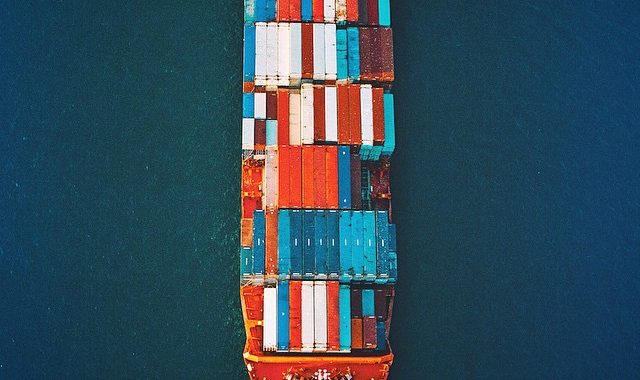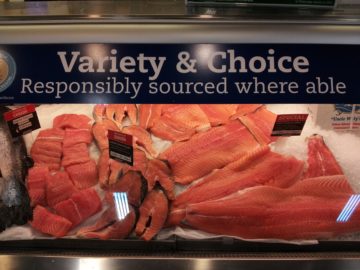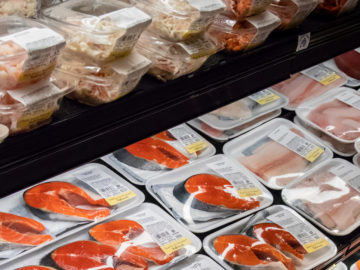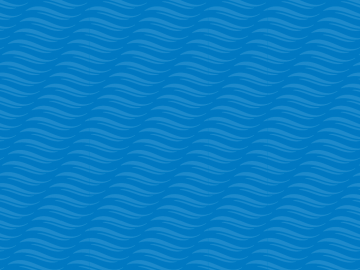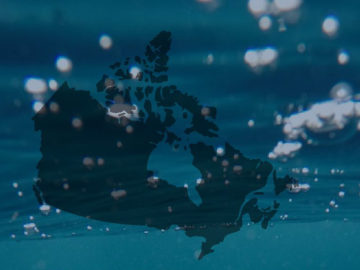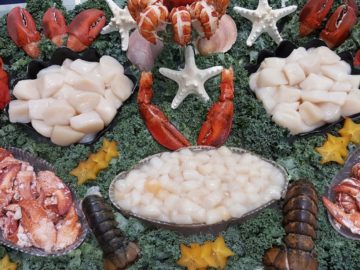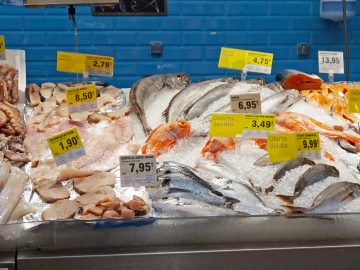Devoid of proper systems for data collection and retention, species information on a seafood product often disappears without a trace.
The COVID-19 pandemic is revealing much about our seafood supply chains, with the reduction in global trade and shut down of many food service operations highlighting its vulnerabilities. The crisis has also resulted in increased public awareness of the product purchased and where that food comes from, such as where the fish was caught or farmed and the route it took to end up at the grocery store.
Due to the complexity of seafood supply chains, traceability has become an increasingly important tool to help track, retain, and communicate information about a seafood product to buyers. Industry and NGOs have reported an increase in awareness for the necessity of traceability in the face of the pandemic, and into the future, especially in the context of health and safety and managing supply chain risk. Currently, in Canada, we lack the proper traceability systems and labelling requirements to know enough information about a seafood product, meaning even if it was recorded at some point, the information is likely lost as it moves through the supply chain.
Furthermore, our basic global trade systems do not allow even species level information (ie the scientific name) to be recorded. The scientific name of a fish or shellfish product is a critical piece of information on a label as the common names on labels are often generic and can represent many different species, reducing the ability for a buyer to make a sustainable, and responsible decision. The basic information that follows a seafood product as it is traded globally is through Harmonized System (HS) codes, which are 6-digit commodity codes for international trade. The codes provide identifying information about items for import/export. However, with only 52,000 codes to identify every commodity traded around the world, categories can be quite broad. For example, there is a code for frozen fish fillets with no species attached. In Canada, HS codes are expanded by adding a Tariff Code, 4 more digits to further identify the commodity and the applicable tariff. However, there is still some broad categorization. As our Taking Stock report highlighted, a significant proportion of Canada’s fish and seafood is imported without a species associated with it, but rather in a variety of catch all categories that are identified as “not elsewhere specified” (NES) product, meaning that the product in question doesn’t fit well with one of the other HS codes. While some NES items do have a species association, many lack species identifications.
HS Code Examples:
Fish fillets, nes, fresh or chilled
Fish stick & sim[ilar] prod[ucts],any size/sh[ape], fillets/o[r] portions,bread[ed]/coat[ed] w batter,exc[luding] minc[ed]
It is clear that trade codes are not ideally suited for identifying species of fish and seafood, but rather for facilitating efficient international trade. This isn’t the only place along the supply chain where the species information is lost however. There are many places along the supply chain (especially in a globalized supply chain) where the species information may be lost. While the species of the catch is often recorded by harvesters on the boat, this information may be quickly discarded as it is required for fisheries managers, but not for the actual sale of the catch to the first buyer. Additionally, if the species information is passed on the processor, it can also be lost when several species are combined into a single product, when fish or shellfish from different fishing vessels or farmed are combined in a processing plant or simply new labels are placed on the product with new information. Finally, at the retailer or point of sale, the species information is rarely shared with the consumer, as Canada only requires the common name of the fish or shellfish on a product label.
With so many chances for species information to be lost and the complex nature of our global supply chains, it is very difficult to trace back and determine the species of fish or shellfish. This creates a void of information that prohibits consumers from making informed seafood choices. Additionally, the sustainability of Canada’s imported seafood supply is not clearly under the mandate of any government agency, leading to a lack of responsibility for this data collection and retention.
Without proper traceability systems species (and other important) information can be easily lost at each step along the supply chain if not required. Canada does not have food labelling or import regulations that require the recording of many important pieces of information, allowing it to get lost along the supply chain. However, the Federal government’s promise to implement a boat-to-plate traceability program is the perfect opportunity to fix this. It is time our government strengthened regulations for information collection, record keeping, and front of package labelling for seafood products to support seafood transparency.
SeaChoice’s recent petition garnered over 5,600 signatures from engaged consumers who want to see proper seafood traceability implemented. Sign up for our newsletter to be kept informed about how you can support the government’s promise going forward.
